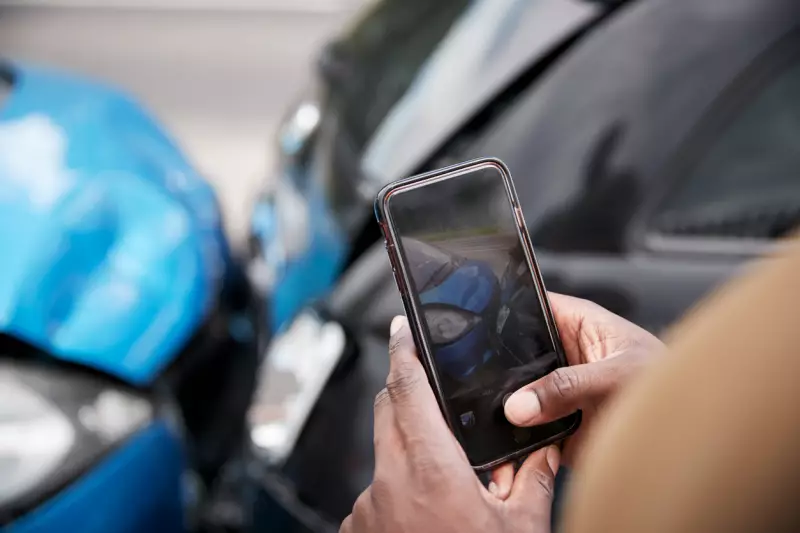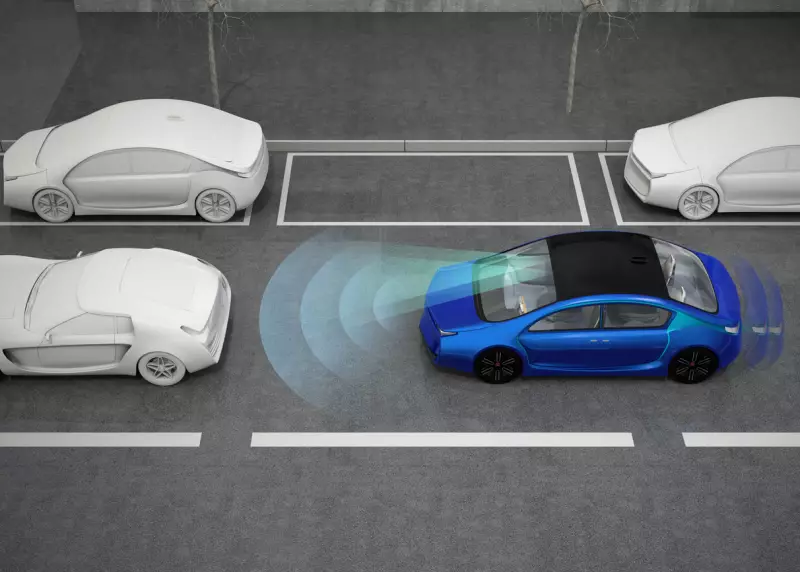A rear-end collision is a traffic accident involving one vehicle or road user running into another road user or motor vehicle from behind. The most common type of auto accident in the United States is a rear-end accident, and these accidents are caused by several factors. According to a report by the National Highway Traffic Safety Administration (NHTSA), nearly 40% of the millions of motor accidents in the U.S. are rear-end collisions. In fact, one rear-end accident occurs approximately every eight seconds in the United States. This article discusses how to prevent a rear-end collision, your responsibilities and rights when involved in such an accident, how to handle the situation, and how to understand faults in any rear-end collision.
What Is a Rear-End Collision?
A rear-end collision occurs when a car crashes into another vehicle from the rear. In most cases, it happens when a car's brake is not applied in time, causing the driver to ram into the motor vehicle ahead. Also, a rear-end collision can happen when a vehicle reverses into another car behind it. Typically, rear-end accidents occur when the front car stops abruptly or because the vehicle coming from behind is moving faster than the one in front. A complex case can involve your vehicle getting rear-ended, leading to you rear-ending another car. The severity of rear-end accidents is usually less than that of other accident types because vehicles involved travel in the same direction at relative speeds. However, it can get more serious when the motor vehicles involved are of different weights, such as when a tractor trailer rams into a sedan from behind at a high speed.
Rear-end collisions often have consequences, including injuries, vehicle damage, and legal implications. Common injuries sustained in rear-end accidents include fractures, back injuries, spinal cord injuries, face injuries, neck injuries, shoulder injuries, and in extreme cases, fatalities. Similarly, damage sustained by vehicles in a rear-end accident can include trunk damage, bumper damage, exhaust system damage, tire and wheel damage, suspension problems, tail light damage, frame damage, paint scratches, and rear window breakage. A rear-end collision where a fault is established also has legal consequences, including fines, traffic violations, and personal injury suits, in which victims seek compensation for damages and injuries.
Common Causes Of Rear-End Accidents
Popular causes of rear-end collisions include the following:
- Traveling at High Speeds - It may be difficult to stop in good time if the car in front of you slows down or unexpectedly stops while you are driving at high speeds. Typically, traveling at high speeds reduces a vehicle's reaction time to braking.
- Faulty Brake Systems - There is a high chance of rear-ending a car when your vehicle's brake system is faulty, as slowing down or stopping the vehicle becomes difficult.
- Distraction While Driving - Eating, placing phone calls, texting, drinking, and changing radio frequencies are common distractions leading to rear-end accidents. In fact, distracted driving is one of the most prominent causes of rear-end accidents.
- Poor Weather Conditions - Driving in weather conditions like heavy precipitation, fog, mist, and snow can cause a rear-end collision. Typically, some weather conditions reduce visibility and may cause slippery roads like black ice, leading to reduced traction.
- Amateur Drivers - An inexperienced driver will likely lack the judgment to estimate stopping distances while operating a vehicle. This can increase the chances of rear-ending a car.
- Tailgating - Driving too closely behind another car is risky as your vehicle may not get a chance to react quickly to your braking if the car before you suddenly brakes or stops.
What Is the Right Action to Take in a Rear-End Collision?

Taking the right action after a rear-end accident is crucial, especially if you are still conscious and did not suffer a serious injury as a result of the incident. Do the following if you find yourself in a rear-end collision:
- Prioritize your safety and everyone involved in the crash by checking for injuries. Seek immediate medical help for anyone who is hurt. Visit a medical facility for evaluation even if there are no physical signs of being hurt.
- Get your vehicle to a safe space, particularly to a nearby parking lot or the side of the road if it is still drivable, and make sure to turn on hazard lights. Where the car is not operable, wait for help to arrive and remain inside with the safety belt fastened.
- Document the details of the scene/evidence by taking photos of any visible damage and the position of the vehicles involved, jotting the date, time, and location of the accident, and any other thing that may have been responsible for the crash.
- Exchange information like names, insurance details, contact information, vehicle registration numbers, and driver's license numbers with the other driver.
- Take note of witnesses at the collision scene and get their contact information. You will need their testimony in the event of any legal claim.
- Meet with the police when they arrive and give them a detailed statement about the collision and an honest assessment of the incident. However, if possible, never admit fault while writing your statement.
- Contact your insurance company and report the incident immediately after leaving the accident scene. Provide them with all possible evidence you have gathered, even if you believe the accident was not your fault. Your insurance company will help you understand your coverage and assist you through the claims process.
Who's at Fault In a Rear-End Collision?
In cases of rear-end collisions, especially those involving two vehicles, it is generally presumed that the trailing car is at fault while the one getting rear-ended is not. However, there are instances where the person who hits you from behind may not be at fault and when you may not be at fault for ramming into someone's car from the rear. For instance, a driver in front of you who brake-checks you or starts to zoom off and suddenly stops as you start to pump the gas may be at fault in a rear-end collision. Also, if a driver ahead of you crashes into your vehicle in reserve, the driver may be at fault.
Unfortunately, the presumed negligence of tailgating drivers makes them liable for injuries and damage in most cases of rear-end accidents. However, there are instances where comparative negligence law may apply, and both drivers in a rear-end accident will share faults and split the liability. Such situations include the following:
- The driver in front was driving aggressively or overly slowly
- The driver ahead reversed without checking properly
- The driver in front failed to use their turning indicators for turns at intersections or lane changes
- A situation where two vehicles reverse into each other in a parking lot
- The car in the front has malfunctioning or non-functional brake lights
Who Is at Fault in a Rear-End Collision Involving 3 Cars?
Deciding who is at fault in a rear-end collision involving three vehicles (multi-car accidents) can be complex. It is often presumed that the middle vehicle is at fault, as they are expected to try to prevent crashing into the front car by either maintaining a safe distance or reacting quickly. However, some exceptions may shift the presumed fault away from the middle car. For instance, if the middle vehicle has an unexpected brake failure or the front vehicle suddenly stops (without a genuine reason), the presumed fault may be canceled, especially if there is proof that the middle car could not reasonably avoid the rear-end collision.
Determining who is at fault in a three-vehicle rear-end collision requires an exhaustive investigation of the specific circumstances and assessing the available evidence. Generally, apportioning liability in a rear-end collision involving three cars depends on what happened in the accident and follows certain guidelines as discussed below:
- The driver of the vehicle in the front can be at fault for getting rear-ended by the middle car and making the third car ram into the middle car if the front driver applies the brakes at the last second without giving the cars behind enough time to slow down and avoid a collision.
- The driver of the car in the middle can be liable for a three-car rear-end accident if the driver gets distracted for a few seconds, and by the time they try to apply the brakes, it is too late to prevent a crash into the front vehicle. Consequently, the vehicle in the back may not have ample time to stop because the braking applied by the middle car was sudden, leading to a three-vehicle rear-end accident.
- The third car (the farthest) can be at fault if it crashes into the back of the middle vehicle and pushes it into the one at the front due to tailgating, distraction, or overspeeding.
Nonetheless, law enforcement investigations may find more than one driver at fault in a multi-vehicle rear-end collision. In such a situation, the general presumption of the rear vehicle taking the blame for the crash may not strictly apply. In most cases, the police will blame the drivers for not allowing a safe following distance between their cars.
What is The Average Payout For a Rear-End Collision?
The average payout on a rear-end collision varies and largely depends on a number of factors and the specifics of the case. Such factors include the accident's impact, severity, medical bills, degree of driver negligence, and lost income. Generally, insurance companies calculate payout amounts for rear-end collisions based on these factors and how much insurance coverage applies to the case. In most cases, insurers employ a formula that multiplies actual medical costs by a factor between 1.5 and 5, depending on the accident's impact on the victim's life and the severity of injuries sustained.
To make any payout claims for a rear-end collision, you must file a report with your insurance company as soon as possible. When you contact your insurer, provide your policy number, details and description of the accident, the extent of injuries, date, location, and time of the crash, the extent of damage, vehicle details, and evidence gathered at the scene. The insurance company will either deny or approve your claim. Where the claim is approved, the approval will likely include a settlement offer. In most situations, these offers are far less than the actual accident-related expenses. If your vehicle was rear-ended by another vehicle and the at-fault driver's insurance company is unwilling to pay, do not be tempted to contact the company. In that case, get a lawyer to deal with them on your behalf.
How to Prevent a Rear-End Collision

Some of the things you can do to prevent rear-end collisions include the following:
- Always maintain a safe following distance behind another vehicle
- Avoid getting distracted while driving
- Avoid driving while drowsy or when drunk
- Always drive at a safe speed to enable you to have control of the car when braking
- Brake slowly
- Improve your driving habits and skills with ongoing education
- Avoid dangerous parking, especially on the roadside
- Always maintain good tires and braking system
- Always monitor your car's automatic emergency braking and collision warning systems for possible signs of fault
Taking the right steps and understanding who is at fault in a rear-end collision is important in resolving legal issues relating to the incident and making payout claims with your insurance company. However, taking preventive measures to prevent rear-end accidents is more important. That's why it's essential to be aware of what leads to rear-end collisions, to maintain your brake system properly, and to practice cautious driving measures to always give yourself enough space to safely stop even if the vehicle ahead of you stops abruptly.








![Best Sites to Check a Car’s History [2025 Review]](https://media.infopay.net/thumbnails/K8lMeG2QLjE46LPqZlmoi6SunKKdT5qvlaRZk6e1.webp)










![Best Sites to Check a Car’s History [2025 Review]](https://media.infopay.net/thumbnails/K8lMeG2QLjE46LPqZlmoi6SunKKdT5qvlaRZk6e1-w356.webp)
